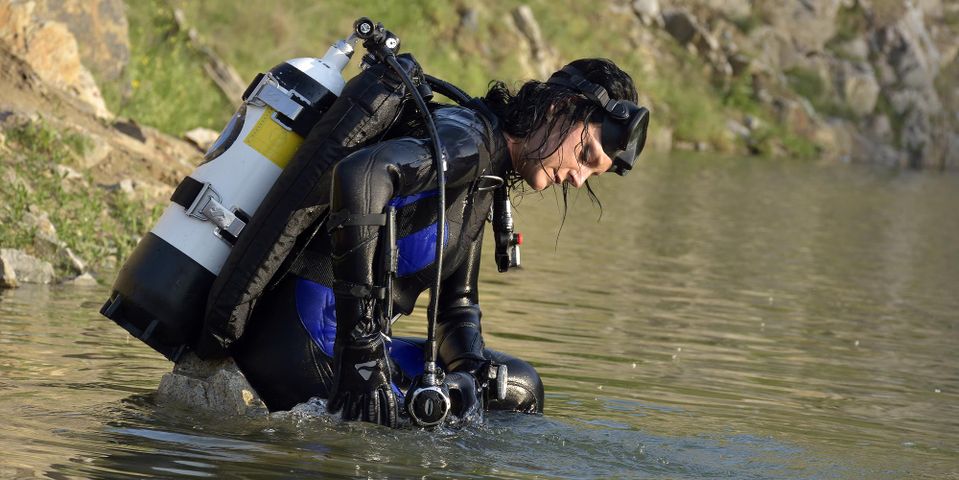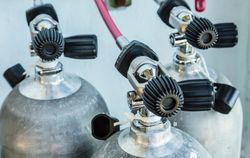5 Tips for Maintaining Your Scuba Equipment

Whether you’re preparing to store your scuba equipment or plan to take a diving trip this fall, safe diving begins with taking care of your equipment. This ensures they stay in good working condition and function as they should. Considering that quality scuba gear can be a significant investment, these steps can help keep your equipment clean and well maintained for your next dive.
How to Keep Scuba Equipment in Great Shape
1. Masks
Bacteria and mildew can build up around the edges of your mask, making you sick and ultimately damaging the seals. After each use, rinse your mask and scrub with mask cleaner, allowing to dry thoroughly before storing. Before every dive, carefully inspect all of your scuba equipment, including your mask. Do not use the mask if there are cracks, chips, and other signs of wear on the lenses and seals.
2. Wetsuits
Clean your wetsuit post-dive to prevent mold and mildew growth. Wash it by hand using warm water and soap designed for wetsuits, allowing it to soak in the cleaner before rinsing thoroughly. Allow the wetsuit to air dry, ensuring it’s dried completely before storing it. Check for signs of wear, stress on the seams, or problems with the zipper, which can lead to tears or further damage. If your wetsuit is damaged, have it repaired by a professional.
3. Regulators and Gauges
Start by rinsing the entire system by soaking in fresh water, taking care not to press second stage purge valves while the system is submerged and checking the first stage dust cover is in place. Run warm water through the regulator mouthpiece and out the exhaust diaphragm.
4. Tanks
The most important maintenance tip for your tanks is to avoid storing them either empty or completely full. Pressure is necessary to keep out the contaminants and moisture that cause corrosion. Set the psi to between 300 and 500 and store your tanks and scuba equipment in a safe place where they won't be damaged.
5. Buoyancy Control Device
After a dive, soak and rinse your buoyancy control device (BCD) with clean water to remove salt deposits. Small amounts of saltwater can enter the bladder of the BCD while diving, so rinsing the interior by adding fresh water and BCD cleaner will help to clear the salt. After making sure to dump any remaining water out of the BCD, store it with a little bit of air inside it.
Even after following these tips, do not forget to have your Regulator, Gauges, Computer, and BCD checked and serviced as required by the manufacturer.
If you need scuba diving instruction, new scuba equipment, or help maintaining your existing equipment, turn to Aquatic Center of Rochester. With more than 30 years of experience, they offer a range of scuba and snorkel classes for all ages and levels in Henrietta, NY. Call (585) 334-1670 to learn more or visit their website for a list of classes and more information about the products they carry.
About the Business
Have a question? Ask the experts!
Send your question

